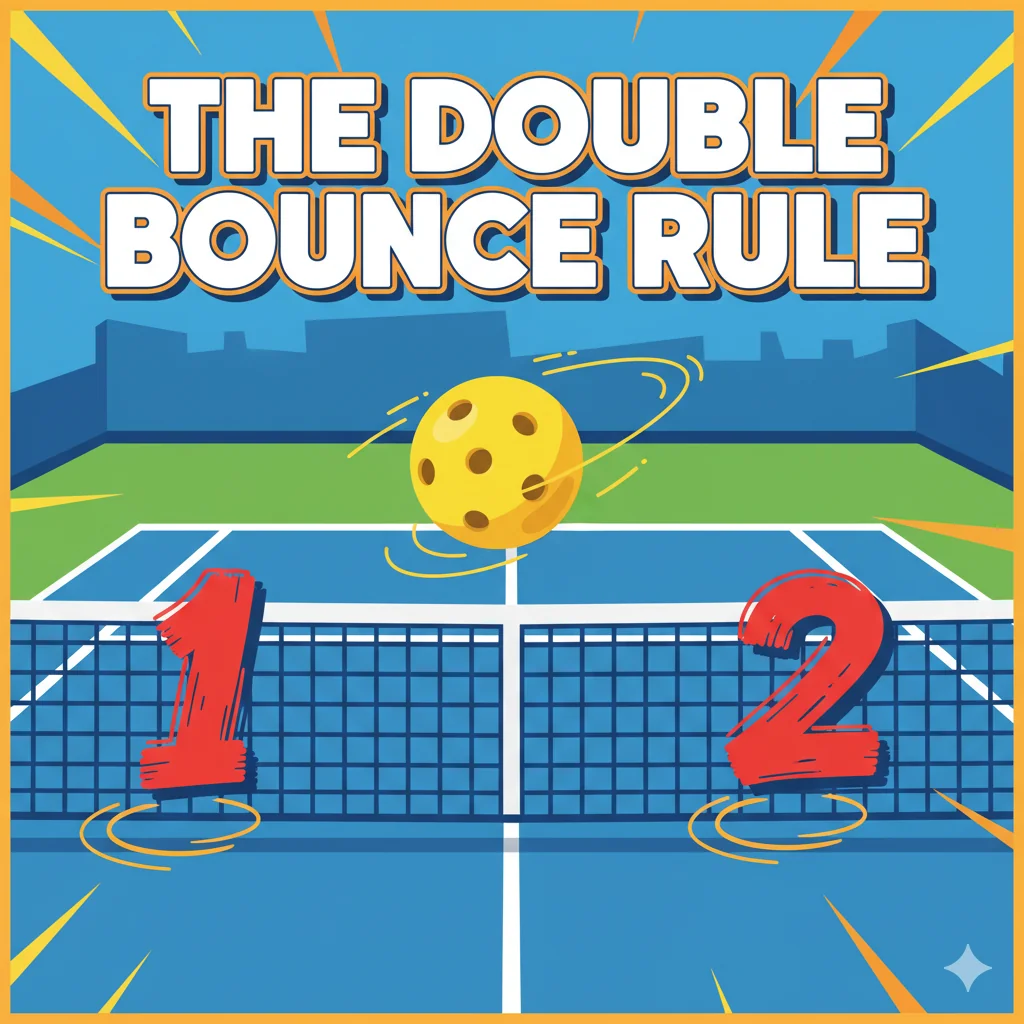The Pickleball Double Bounce Rule Explained (Simply)

Is the pickleball double bounce rule tripping you up? It's one of the most common hurdles for new players, but it's actually simple once you see it in action.
This guide will explain the rule in plain English, show you why it exists, and help you avoid the most common fault that players make because of it. Let's dive in.
What is the Double Bounce Rule in Pickleball?
The pickleball double bounce rule (also known as the two-bounce rule) states that the ball must bounce once on each side of the net following the serve.
This means two things must happen: 1. The return of serve (by the receiving team) must bounce before the player hits it. 2. The third shot (by the serving team) must also bounce before the player hits it.
After these two bounces have occurred, 'open play' begins, and players are then allowed to volley the ball (hit it out of the air).
In This Guide
How the Double Bounce Rule Works: A Step-by-Step Breakdown
Let's walk through the first three shots of any pickleball point to see the rule in action.
Shot 1: The Serve
- The serving team hits the ball cross-court into the service box.
Shot 2: The Return (Bounce 1)
- The receiving team must let the serve bounce once on their side.
- They then hit the ball back to the serving team.
Shot 3: The Third Shot (Bounce 2)
- The serving team must let the return of serve bounce once on their side.
- They then hit the ball back to the receiving team.
Open Play
- After the third shot, the double bounce rule is no longer in effect for this rally. Both teams are now free to either volley the ball (hit it in the air, usually at the net) or play it off a bounce.

This diagram shows the required bounces for the first two shots after the serve. The ball must bounce on the return (Bounce 1) and on the third shot (Bounce 2).
Why Does the Pickleball Bounce Rule Exist?
The double bounce rule in pickleball was created to prevent the serving team from having an overwhelming advantage.
Without this rule, the serving team could simply serve and then immediately rush the net. They could then smash a volley from the returning team, who is forced to stay back to receive the serve. This 'serve-and-volley' strategy would end points too quickly.
By forcing the serving team to also let the ball bounce (the third shot), the rule creates a more balanced game. It gives the receiving team a fair chance to hit a good return and move up to their own non-volley zone (kitchen) line. This creates the exciting dink rallies that pickleball is famous for.
Common Mistake: Volleying the Return of Serve
The most common fault related to this rule is when the serving team (or their partner) hits the return of serve out of the air (a volley).
Remember: You must let the return of serve bounce. If you volley it, it is a fault, and you lose the rally. Always let the ball hit the ground on that third shot!
Frequently Asked Questions
What is the two-bounce rule vs. the double bounce rule in pickleball?
They are the exact same thing! The terms 'double bounce rule' and 'two-bounce rule' are used interchangeably. Both refer to the rule that the ball must bounce once after the serve (on the return) and once after the return (on the third shot).
Does the pickleball bounce rule apply to the whole game?
No, the rule only applies to the first two shots after the serve (the return and the third shot). Once the third shot has been hit (after its bounce), the double bounce rule is no longer in effect for that rally. From that point on, players can volley the ball or play it off the bounce.
Can the ball bounce twice on my side?
Letting the ball bounce twice on your side before you hit it is a different rule. That is a fault, and you lose the point. The double bounce rule is about a sequence of one bounce on each side, not two bounces on one side.